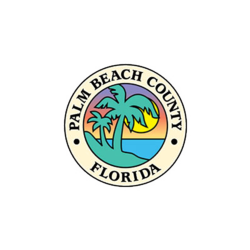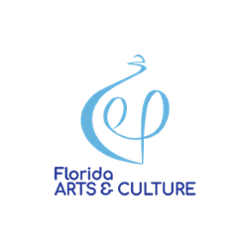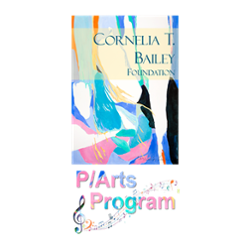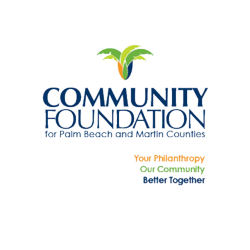Program Notes
2019-2020
CONNOISSEUR CONCERT SERIES
Movies and Idylls
This concert is dedicated to the memory of Martin L. Coyne,
Founding President
Sunday, December 8, 2019, 3 p.m.
Alastair Willis, Guest Conductor
Robyn Marie Lamp, Soprano Soloist
PROGRAM
Music for Movies ~ Aaron Copland
New England Countryside, from The City
Barley Wagons, from Of Mice and Men
Sunday Traffic, from The City
Grovers Corners, from Our Town
Threshing Machines, from Of Mice and Men
Knoxville: Summer of 1915 ~ Samuel Barber
Robyn Marie Lamp, Soprano Soloist
INTERMISSION
Siegfried Idyll ~ Richard Wagner
Trittico botticelliano (Three Botticelli Pictures) Ottorino Respighi
La Primavera (Spring)
L’Adorazione dei Magi (The Adoration of the Magi)
Le nascita di Venere (The Birth of Venus)
PROGRAM NOTES
by Dr. Eve R. Meyer
Music for Movies
Aaron Copland (1900-1990)
Aaron Copland, like a number of other composers in the 1930s and 40s, became interested in writing music for films. He based his 1943 suite, Music for Movies, on five pieces he arranged from his first three films. His first score was for a documentary on urban life called The City, filmed for the 1939 New York World’s Fair. His next two scores received Academy Award nominations: Of Mice and Men (1939) and Our Town (1940). All the suite movements reflect the “Americana” style that Copland developed. Although he was from Brooklyn, his music seems to embody the spirit of small-town and rural America.
The first movement, “New England Countryside,” depicts the tranquility and dignity of rural life. The trombones open the movement and are answered by the trumpets, woodwinds, and strings. A tinkling triangle introduces “Barley Wagons,” which depicts the rocking of the wagons as the farmers get ready to harvest their crop. The music is based on a folk melody. In “Sunday Traffic,” the scene shifts to the big city, which is ensnared by increasingly heavy traffic and the annoying honking of horns. As the congestion builds, the brasses become more dissonant until a traffic jam brings everything to a sudden stop. “Grovers Corner” provides an excellent example of Copland’s skill in depicting life in a small town. Ken Burns used the music in his 2007 documentary The War (World War II). The suite ends with the catchy rhythms of “Threshing Machines.”
Knoxville: Summer of 1915
Samuel Barber (1910-1981)
Samuel Barber composed Knoxville: Summer of 1915 for soprano Eleanor Steber, who premiered it in 1938 with the Boston Symphony. The text is from portions of a prose-poem by Pulitzer Prize-winning author James Agee in which he nostalgically recalls his life as a child in Knoxville. He paints a picture of a summer evening with his family sitting in rocking chairs on the porch and lying on quilts in the backyard. He hears the sound of a streetcar, birds, an automobile, a horse and buggy, people talking, and he sees the night sky and the stars.
Barber was impressed by the similarity between his and Agee’s childhood, and he wanted his music, which he called a “lyric rhapsody,” to capture the spontaneity of Agee’s text. Although his richly colored musical setting may give an improvisatory effect, it is organized into five sections that mirror the text. It opens in a tranquil mood, and a three-note pattern, first heard when the soprano sings “when people sit on their porches,” forms the basis for most of the work’s melodic lines. The peaceful mood is interrupted twice: by the noisy streetcar and later when Agee thinks about his family’s mortality. The work ends quietly as he asks God to bless his family, and the evening ends as the child goes to bed.
Siegfried Idyll
Richard Wagner (1813-1883)
Wagner composed Siegfried Idyll in 1870 as a Christmas and birthday gift for his wife, Cosima. He arranged to have the piece performed early on Christmas morning by a small group of musicians assembled on the stairs leading to Cosima’s bedroom. She wrote in her diary: “As I awoke, my ear caught a sound, which swelled fuller and fuller; no longer could I imagine myself to be dreaming, music was sounding, and such music!”
That year, Wagner was in the midst of writing his opera Siegfried, and his son, also named Siegfried, had been born the previous year. These two important events influenced the composition, which includes the German lullaby “Sleep, Children, Sleep.” Wagner used some of the music from the opera in Siegfried Idyll, particularly the love music of Siegfried and Brűnnhilde and the woodbird’s song. Wagner later rewrote the piece for a larger orchestra, but the work still retains the intimacy and expressiveness of the original.
Trittico botticelliano (Three Botticelli Pictures)
Ottorino Respighi (1879-1936)
The Italian composer Ottorino Respighi was fascinated with Renaissance art. Three paintings by Sandro Botticelli (ca. 1445-1510) from the Uffizi Gallery in Florence served as inspiration for Respighi’s 1927 suite, Trittico botticelliano. The work is scored for a chamber orchestra plus bells, triangle, harp, piano, and celesta (a small keyboard instrument in which the hammers hit metal bars).
Botticelli’s La Primavera (Spring) depicts an assortment of mythological figures in a woodland setting, and the music captures the essence of the pastoral scene with glowing, shimmering trills, horn calls, and passages that sound like Renaissance round dances. The Adoration of the Magi, when the Three Wise Men meet the Holy Family, is the central and lengthiest of the three movements. At the beginning, Respighi colors the music with an oriental flavor, featuring the oboe and bassoon, to illustrate the Magi’s journey from the East. Much of the movement is based on the Christmas hymn “Veni Emmanuel.” When the Magi meet the infant Jesus, Respighi introduces the piano, celesta, harp, and triangle to create a heavenly effect, and the movement closes with the Magi’s journey home. The quiet opening of The Birth of Venus portrays the calm sea and the Zephyrs blowing gentle breezes. The music gradually reaches a climax—the strings suggest a wave-like motion in the sea, the orchestration becomes richer, and the piano, harp, and celesta join the other instruments to signify the magical moment when the goddess Venus emerges from the sea on a seashell. The movement ends quietly as it began.
*A special thanks from The Symphonia to Dr. Eve Meyer, for the incredible work she does, in a volunteer capacity, as our Program Annotator. She is professor emerita and former chair of the music history department at Temple University in Philadelphia, where she was the recipient of the University’s Great Teacher, Lindback Foundation, and Distinguished Professor Awards. She is the author of three books and numerous articles on European and American music, and she is currently the editor in chief of a professional music journal.
 Donate
Donate
















